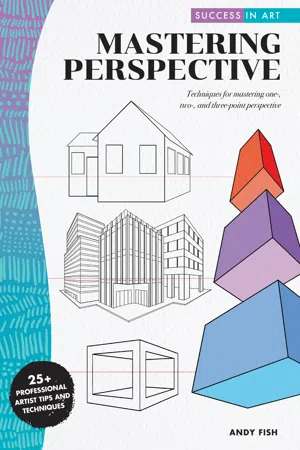
Success in Art: Mastering Perspective
Techniques for mastering one-, two-, and three-point perspective - 25+ Professional Artist Tips and Techniques
- 112 pages
- English
- ePUB (mobile friendly)
- Available on iOS & Android
Success in Art: Mastering Perspective
Techniques for mastering one-, two-, and three-point perspective - 25+ Professional Artist Tips and Techniques
About This Book
Ready to take your drawing skills to the next level? Success in Art: Mastering Perspective allows beginning artists to master the challenges of creating depth and realism with one-, two-, and three-point perspective. Perspective is a necessity for realistic drawing. Whether you are drawing people, still life, architecture, or landscapes, you must have a thorough understanding of perspective in order to create depth and dimension in your subject. Mastering Perspective explains one-, two-, and three-point perspective in a fresh, approachable way, through the eyes of an experienced artist. Learn how to use vanishing points and foreshortening to build scenes and compositions and render subjects in proportion. With clear, step-by-step instructions and illustrations outlining horizon lines, field of vision, point of view, and more, Mastering Perspective teaches artists how to master this basic, and often challenging, technique. More than a basic step-by-step drawing guide, the Success in Art series focuses on subject matter that is often challenging for artists, regardless of skill level. From highly foundational art concepts, such as proportion and perspective, light and shadow, and composition to mastering textures and the human figure, Success in Art covers difficult subject matter in an approachable way using easy-to-grasp techniques and step-by-step exercises.
Frequently asked questions
Information
Three-point Perspective: Put It to Work



Table of contents
- Cover
- Title Page
- Contents
- Introduction
- Getting Started: The Essentials
- Understanding Basic One-point Perspective
- Taking One-point Perspective to the Street
- One-point to Two-point Perspective
- Two-point Perspective: Put It to Work
- Advanced Two-point Perspective
- Three-point Perspective
- Three-point Perspective: Put It to Work
- Casting Shadows Using Perspective
- Final Thoughts
- About the Artist
- Copyright